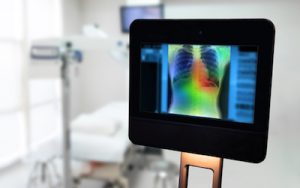As we age, our body is not as resilient as it once was. Bones may be weaker and eyesight can diminish. Lung cancer is one type of illness that our chances of developing greatly increases as we age.
A variety of different types of lung cancer is possible for older men. Understanding why lung cancer is so prevalent is important when discussing future health.
Lung Cancer in Older Men
Many people assume lung cancer is the same for women as it is for men. This is false. Not only are the types of lung cancer often different, but the treatment and prognosis vary as well. Although it is commonly thought that women have a better prognosis than men, with new technology and treatment options available, there is new hope for men diagnosed with lung cancer.
The average age for a man to be diagnosed with lung cancer is 71. Approximately 1 in 13 men can develop this cancer. A persistent cough, pneumonia and coughing up blood are all symptoms that something serious may be wrong in the lungs.
Types of Lung Cancer
The two primary types of this cancer are non-small cell lung cancers and small cell lung cancers.
Non-small cell lung cancers account for approximately 80% of all lung cancers. This particular type is most common in men. In contrast, small cell lung cancers tend to grow in the central areas of the lung. These tend to spread early on.
How Common are Lung Cancers?
Both small cell and non-small cell cancers are the second most common cancer for men. If the patient has smoked or still smokes cigarettes, the chances of developing these lung cancers is greatly increased. Men of color are also at greater risk for developing lung cancers, but develop small cell lung cancers at a lower rate.
How to Detect Lung Cancers

There are a variety of imaging tests that can be used to find cancers in the lungs. Using x-rays, sound waves, magnetic fields and/or radioactive substances can create images of the body’s insides. These tests can show any possible areas for cancer as well as if the cancer has spread to other parts of the body. They can also show if treatment is working. CT scans and chest x-rays are commonly used when diagnosing cancers in the lungs.
Conclusion
The earlier someone is screened for the possibility of cancer, the better chance they have for successful treatment. Treatment options are always best performed early to prevent any possibility of cancer spreading to other parts of the body. Lung cancers can frequently occur in older men, which makes healthcare imperative for those over 70.





